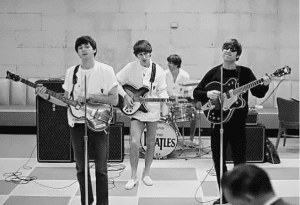The Story Of The Jazz Song That Inspired A Pink Floyd Classic

via Pink Floyd / Youtube
Pink Floyd are never afraid to go outside the box. Even to this day, they are consistently acknowledged as one of the most forward-thinking and inventive rock bands of all time. Syd Barrett, Roger Waters, David Gilmour, Nick Mason, and Richard Wright unanimously impacted musicians in progressive, psychedelic, acid, and arena rock from the mid-1960s well into the 2000s.
Apart from their talents, they are well-recognized in terms of album sales. They are known for releasing colossal albums, specifically Dark Side of the Moon. The Dark Side of the Moon is a mysterious and musically satisfying concept album about insanity and death. The band has withstood the departure of vocalist Syd Barrett, who began to be troubled at this point and created a succession of spacious, improvisatory albums. However, with the help of DOSTM, Pink Floyd quickly rose to international fame.
Although Pink Floyd’s Dark Side of the Moon is largely inspired by the members’ personal experiences, the first proper song’s opening sounds were unrelated to rock.
Before diving headfirst into the album’s more famous tracks like “Time” and “Money,” “Breathe” serves as a moment of respite, urging the listener to take a deep breath and enter the musical universe. When asked about the many approaches that Richard Wright in writing the arrangement, he credited his jazz upbringing, saying in an interview with Classic Albums.
“I came from jazz, basically, that’s my inspiration. There’s a certain chord [in ‘Breathe’]. That’s totally down to a chord that I heard on a Miles Davis album. I remembered this chord and working it out at home for the record.”
No alternative chord sequence for “Breathe” could have hoped for the same amount of fascination as the one that was substituted. All through the album, the song discusses the deeper meaning of life and what most people want out of it, and this subtle shift in tone represents the enigma that surrounds these concerns.












